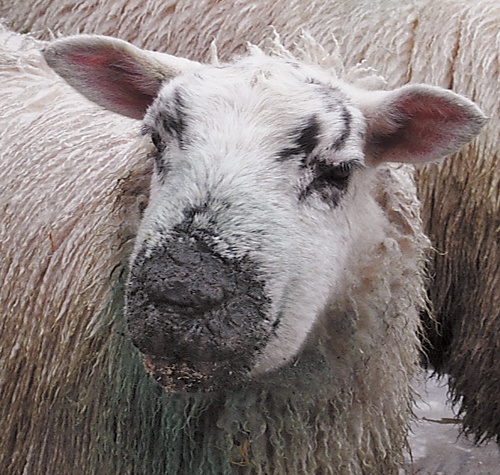Difference between revisions of "Sheep Medicine Q&A 05"
m |
|||
| (One intermediate revision by one other user not shown) | |||
| Line 18: | Line 18: | ||
*bluetongue | *bluetongue | ||
*sheep pox (not in UK) | *sheep pox (not in UK) | ||
| − | |l1= | + | |l1= Orf |
|q2=What treatments would you administer? | |q2=What treatments would you administer? | ||
|a2= | |a2= | ||
| Line 24: | Line 24: | ||
There is limited evidence that levamisole (2.5mg/kg injected subcutaneously every 3–4 days) speeds up remission of orf lesions. <br><br> | There is limited evidence that levamisole (2.5mg/kg injected subcutaneously every 3–4 days) speeds up remission of orf lesions. <br><br> | ||
Protective clothing and gloves must be worn when handling sheep with orf because of the zoonotic risk. Animals should be removed from this pasture and isolated from the main flock. | Protective clothing and gloves must be worn when handling sheep with orf because of the zoonotic risk. Animals should be removed from this pasture and isolated from the main flock. | ||
| − | |l2= | + | |l2= Orf#Treatment |
|q3=What samples would you collect? | |q3=What samples would you collect? | ||
|a3= | |a3= | ||
*CPD virus can be demonstrated by direct electron microscopy of fresh lesions. | *CPD virus can be demonstrated by direct electron microscopy of fresh lesions. | ||
*Bacteriology of the skin lesions is of doubtful benefit. | *Bacteriology of the skin lesions is of doubtful benefit. | ||
| − | |l3= | + | |l3= Orf#Diagnosis |
|q4=What preventive measures could be considered for next year? | |q4=What preventive measures could be considered for next year? | ||
|a4= | |a4= | ||
Orf vaccine must never be used in a clean flock. The timing of vaccination is approximately 6 weeks before the anticipated occurrence of disease. Care must be exercised during handling the live vaccine as it is affected by high temperatures and inactivated by disinfectants. | Orf vaccine must never be used in a clean flock. The timing of vaccination is approximately 6 weeks before the anticipated occurrence of disease. Care must be exercised during handling the live vaccine as it is affected by high temperatures and inactivated by disinfectants. | ||
| − | |l4= | + | |l4= Orf#Control |
</FlashCard> | </FlashCard> | ||
Latest revision as of 23:23, 5 August 2011
| This question was provided by Manson Publishing as part of the OVAL Project. See more Sheep questions |
A farmer complains of severe skin lesions on the muzzle and lips of approximately 25% of 120 6-month-old lambs, 10–14 days after movement on to pastures containing large numbers of thistles (site of special scientific interest). The skin is oedematous with serous exudation and superficial pus accumulation, has become desiccated, forming hard scabs separated by deep fissures. Careful removal of a scab reveals a deep bed of exuberant granulation tissue. Scab material narrowing the nostrils causes dyspnoea with stertor and abdominal breathing in some lambs.
| Question | Answer | Article | |
| What conditions would you consider? (Most likely first.) | The most likely conditions to consider include:
|
Link to Article | |
| What treatments would you administer? | Intramuscular procaine penicillin for 5–7 consecutive days and topical antibiotic spray should be used to control the superficial secondary bacterial infection. |
Link to Article | |
| What samples would you collect? |
|
Link to Article | |
| What preventive measures could be considered for next year? | Orf vaccine must never be used in a clean flock. The timing of vaccination is approximately 6 weeks before the anticipated occurrence of disease. Care must be exercised during handling the live vaccine as it is affected by high temperatures and inactivated by disinfectants. |
Link to Article | |
